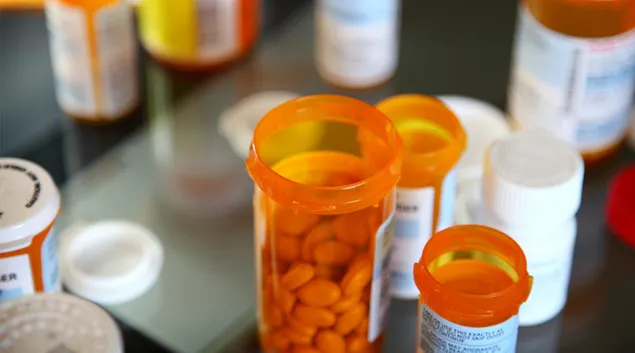
Photo: Shana Novak/Getty Images
Some Medicare Part D plans left behind millions of dollars in savings because they didn't cover generic versions of expensive hepatitis C drugs in 2019, in part due to the structure of the Part D program itself, finds a new report from the Department of Health and Human Services' Office of the Inspector General.
That structure, according to OIG, may be incentivizing plans to push beneficiaries to high-cost drugs. Part D's programmatic structure may lead to plan sponsors preferring higher-cost versions, resulting in beneficiaries paying thousands more out-of-pocket and nearly double Medicare reinsurance.
In the last decade, Medicare Part D and its beneficiaries spent billions of dollars on these hepatitis C drugs. In response to concerns over the affordability of hepatitis C treatments, drug manufacturer Gilead introduced authorized generic versions of two of its brand-name hepatitis C drugs in 2019 (authorized generics are brand-name drugs that are sold without the brand name on their label).
Yet despite the availability of these authorized generics, as well as other lower-cost brand options, OIG's preliminary research suggested that Part D beneficiaries continued to be more likely to use higher-cost hepatitis C drugs than Medicaid beneficiaries, leading to higher spending in Part D.
WHAT'S THE IMPACT?
Following the 2019 introduction of authorized generic versions of two brand-name hepatitis C drugs – Epclusa and Harvoni – in 2019, use of the authorized generic versions increased in Medicaid at greater rates than in Medicare Part D.
In 2020, some Part D plans did not cover the identical authorized generics, limiting beneficiary access to less costly options. Medicare beneficiaries also were less likely to use other lower-cost brand-name options in 2020 compared to Medicaid beneficiaries.
Although rebates from manufacturers reduced overall Part D spending for higher-cost hepatitis C drugs, including Epclusa and Harvoni, they provided little relief to beneficiaries or the Medicare program, OIG found. Part D beneficiaries without financial assistance paid, on average, $2,200 more out of pocket for higher-cost hepatitis C drugs in 2020.
On top of that, Medicare's average catastrophic coverage payment for a beneficiary prescribed a higher-cost drug was over $8,000 more compared to a beneficiary prescribed a lower-cost drug. As a result, Medicare spent $155 million more in catastrophic coverage payments for higher-cost hepatitis C drugs, despite a similar number of beneficiaries in each cost group reaching catastrophic coverage.
To reduce out-of-pocket costs for beneficiaries and combat rising drug spending in Part D, OIG recommends the Centers for Medicare and Medicaid Services encourage Part D plans to increase access to, and use of, the authorized generic versions of Epclusa and Harvoni.
The agency also recommended that CMS pursue additional strategies – such as educating providers and pharmacies – to increase access to lower-cost drugs.
CMS concurred with both recommendations.
THE LARGER TREND
The basic monthly premium for standard Medicare Part D coverage is decreasing in 2023, CMS announced last month. The average premium for drug coverage will be approximately $31.50 in 2023, down 1.8% from $32.08 in 2022.
The Medicare Part D program helps people with Medicare pay for both brand-name and generic prescription drugs. Part D remains one of Medicare's most popular programs, with more than 49 million Medicare beneficiaries enrolled for prescription drug coverage, CMS said.
CMS said it continues to analyze changes to the Part D program carefully and engages with stakeholders to identify opportunities for improvements, particularly for reducing costs.
Total drug spending in the U.S. in 2021 grew to $576.9 billion, up 7.7% from 2020, and this trend is expected to continue, with an estimated increase of 4% to 6% in national drug spending in 2022, according to a report from the American Society of Health-System Pharmacists.
In July, Senate Democrats released a plan for Medicare to negotiate prices on 10 drugs, with that number increasing in subsequent years. That plan was just approved by both the House and Senate in the Inflation Reduction Act.
Twitter: @JELagasse
Email the writer: jeff.lagasse@himssmedia.com